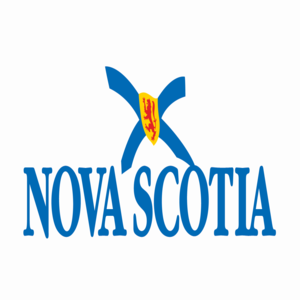families
Type of resources
Available actions
Topics
Keywords
Contact for the resource
Provided by
Formats
Representation types
Update frequencies
status
-

Big Brothers Big Sisters provides children and youth with high quality, professionally supported volunteer mentoring programs. This includes the pairing of children and youth to adult role models who serve as a mentor and a friend to talk to and share the experiences of growing up with. Big Brothers Big Sisters also provides children and youth with opportunities to participate in group programs, both in school and outside of school.
-

This program provides affordable rental housing to families in need and offers rental rates based on income.
-

Boys and Girls Clubs of Nova Scotia provide quality after school and out-of-school programs to children and youth that support their healthy physical, educational and social development.
-

Strengthening Fathers Programs provide holistic intervention and prevention services and supports for men who are or have been abusive in their intimate relationships. These services and supports are provided within the larger continuum of services for families affected by intimate partner violence. Intimate partner violence may include physical, sexual, verbal, emotional, psychological, social, and financial violence and abuse
-

Family Resource Programs provide programs and services for parents and families to support the well-being and development of their children. These include parenting programs, family support, child development activities, practical supports, basic needs/resources, information, referrals, etc.
-

The Youth Outreach program is a community-based program designed to improve the immediate and long-term social, educational/vocational, economic and health outcomes for vulnerable youth. Priority will be given to youth between the ages of 16 and 18 who are facing multiple challenges with limited supports.
-

A Place to Belong (APTB) programs provides children and youth aged 5 to 18 with a positive after school experience that promotes their personal, social, and emotional development. These programs provide an adult-supervised environment where they can experience new opportunities, overcome barriers, build positive relationships, and develop confidence and skills for life.
-

Parenting Journey is a home visitation program that provides support for families experiencing complex social, emotional and familial challenges that may impact overall family functioning, parent-child relationships and the well-being and development of children/youth ages 0 to 18 plus. The Parenting Journey Program is intended to serve families with the fewest resources, facing multiple challenges, and experiencing barriers to accessing supports.
-
This service shows the median after-tax income of lone parent families in 2015 for Canada by 2016, census subdivision. The data is from the data table Household Income Statistics (3) and Household Type Including Census Family Structure (11) for Private Households of Canada, Provinces and Territories, Census Divisions and Census Subdivisions, 2016 Census - 100% Data, Statistics Canada Catalogue no. 98-400-X2016099. This data pertains to households with one lone-parent census family without other persons in the household. In the context of census families, total income refers to receipts from certain sources of all of its family members, before income taxes and deductions, during a specified reference period. After-tax income refers to total income less income taxes of the statistical unit during a specified reference period. The median income of a specified group is the amount that divides the income distribution of that group into two halves. For additional information refer to the 2016 Census Dictionary for 'Total income', 'After-tax income' and 'Census family'. For additional information refer to the 2016 Census Dictionary for 'Total income', 'After-tax income' and 'Census family'. To have a cartographic representation of the ecumene with this socio-economic indicator, it is recommended to add as the first layer, the “NRCan - 2016 population ecumene by census subdivision” web service, accessible in the data resources section below.
-
This service shows the median after-tax income of lone parent families in 2015 for Canada by 2016 census division. The data is from the data table Household Income Statistics (3) and Household Type Including Census Family Structure (11) for Private Households of Canada, Provinces and Territories, Census Divisions and Census Subdivisions, 2016 Census - 100% Data, Statistics Canada Catalogue no. 98-400-X2016099. This data pertains to households with one lone-parent census family without other persons in the household. In the context of census families, total income refers to receipts from certain sources of all of its family members, before income taxes and deductions, during a specified reference period. After-tax income refers to total income less income taxes of the statistical unit during a specified reference period. The median income of a specified group is the amount that divides the income distribution of that group into two halves. For additional information refer to the 2016 Census Dictionary for 'Total income', 'After-tax income' and 'Census family'. For additional information refer to the 2016 Census Dictionary for 'Total income', 'After-tax income' and 'Census family'. To have a cartographic representation of the ecumene with this socio-economic indicator, it is recommended to add as the first layer, the “NRCan - 2016 population ecumene by census division” web service, accessible in the data resources section below.
 Arctic SDI catalogue
Arctic SDI catalogue